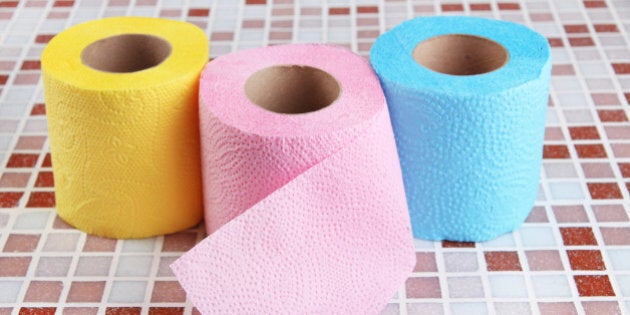
We all do it, don't deny it. We all look at our poo. Whether it's with a casual glance or a long, hard stare, we all stop for a moment to witness what our body has produced. And for the record, I'm glad you do!
As a naturopathic doctor some of the most important, albeit sometimes awkward, questions I ask are about your bowel movements, a.k.a. your poo. Our digestion is truly a glimpse into the health of the whole body and asking these questions helps me get a better understanding about your individual health concerns.
Don't be surprised if during a visit you are asked whether your bowel movements are hard or soft, easy or difficult to pass, or how often you have a bowel movement. When it comes to uncovering the root cause of your health concerns your poo says a lot about you.
Bowel movements are our body's way of eliminating the indigestible parts of the foods we eat, the byproducts of the medications we take, as well many other waste products we accumulate through our daily living.
Our poo is typically composed of:
• Water
• Bacteria from our intestinal flora
• Indigestible fibre, such as cellulose
• Cholesterol
• Inorganic salts
• Dead cells
• Mucous
• Protein
While "normal" is different for everyone, on average most people feel their best with one to two bowel movements daily that are easy to pass, fully digested and have a toothpaste like consistency. And yes, the occasionally piece of corn or tomato skin is totally normal!
Just as shape, consistency and timing of our bowel movements are important indicators as to the health of our digestive system, so too is the colour of our poo.
Brown, red, white or green, these colours tell us much about not only the foods that we eat, but whether you're absorbing important nutrients or have a bowel condition such as IBD, an organ dysfunction, or simply that you've really been into the kale smoothies.
So I encourage you to have more than a peek the next time you find yourself on the loo. Below I've listed seven shades you may encounter when you inspect your number two, as well as what these colours (and poo) might be trying to tell you.
Earlier On HuffPost Canada:
1. Medium to Light Brown:
If peering into your toilet has you seeing a poo a shade of chocolate brown you're in luck: this is considered a healthy colour when it comes to your poo. Ever wonder why your poo is brown?
This is due to the release of bile from the liver and gallbladder, important for the breakdown and absorption of fat, which is then metabolized in your intestine by the bacteria normally present. This result of this metabolism is a byproduct known as stercobilin, which, in turn gives poo its brown appearance.
2. Red:
A shade of red may indicate you have a lower gastrointestinal bleed, but can also be from red-coloured foods (i.e. beets). If you notice this more often than not, it's important that you make an appointment with your primary health care practitioner to determine the cause.
Crohn's disease and ulcerative colitis are inflammatory bowel diseases (IBD) that can present with bloody or red stools, and may also be accompanied with symptoms such as cramping, bloating and diarrhea.
3. Red Streak on Toilet Paper:
If you're noticing a red streak when you wipe after a bowel movement this is typically due to a rectal bleed, associated with hemorrhoids or a fissure. Constipation is a well-known cause of hemorrhoids, the result of straining to have a bowel movement.
But before you reach for the laxative, try increasing your water intake as well as getting more fibre in your diet, such as with ground flax seeds or psyllium husks, as well as with plenty of organic fruits and vegetables. This helps to bulk up your stool, making it easy to pass.
4. Green:
Don't be automatically alarmed should you notice that your bowel movements are a shade of green. It could simply mean that you've been eating lots of healthy leafy vegetables.
Green, however, can also indicate that the food you've eaten has passed through the intestine faster than normal. As bile makes its way through the intestine, this green colour changes to yellow and eventually brown, as previously mentioned.
Any condition that causes diarrhea, and thus decreases bowel transit time, can result in green stool, and some examples include:
• Food poisoning
• An infection such as traveller's diarrhea
• Food allergies, sensitivities or an intolerance
• Inflammatory bowel disease
• Laxative use
5. Yellow:
A yellow appearance may indicate that you have insufficient bile output due to a blockage of your gallbladder. It may also indicate the presence of undigested fat in your bowel movements, such as with pancreatitis (inflammation of the pancreas), which can prohibit the absorption of fats by the body, resulting in fat-laden and pale stool. This will often be accompanied by a greasy texture and foul smell.
Giardia, a parasitic infection of the intestinal tract, is also known to cause yellow diarrhea in some individuals.
6. White, very pale or a grey clay-like:
A poo that seems to be lacking colour may also be indicative of a block in bile flow from the liver and/or gallbladder, liver disease, as well as a pancreatic disorder. A pale appearance of one's bowel movement can be due to liver conditions that impair the production of bile, such as:
• Alcoholic hepatitis
• Viral hepatitis
• Fatty liver
• Hemochromatosis
• Cirrhosis of the liver
The contrast agent barium sulfate used for X-ray exams and some medications containing aluminum hydroxide (antacids) may also produce white/pale-coloured stools.
7. Black and tarry or 'coffee grounds':
If you've noticed that your bowel movements are very dark in appearance, or have a grainy, coffee ground look to them, this is most commonly due to an upper gastrointestinal bleed (esophagus, stomach, small intestine) when blood and bile mix to produce black.
Conditions that may produce bleeding in the upper GI track include:
• Peptic ulcers
• Esophageal varices
• Gastritis
• Gastroesophageal reflux
Black stool can also be caused by high meat consumption, as well as iron supplementation.
Digestion is key when it comes to your health.
What we eat, how we process it, and the eventual elimination of waste products impacts every facet of our health and wellness. We might not always want to admit it, but we all take a look after we go number two, and I for one encourage it!
The appearance of your poo tell us so many things about the inner workings of your body, and if you're consistently seeing anything but brown when it comes to your bowel movements it might be time to see your health care provider.
So take a closer look (just not too close) at this healthy, hopefully everyday function, and find out just what the colour of your poo is trying to tell you.
To get your very own poo reference book, complete with cartoon drawings of the Bristol stool chart, check out www.dralisonchen.com/poobook.
MORE ON HUFFPOST:
